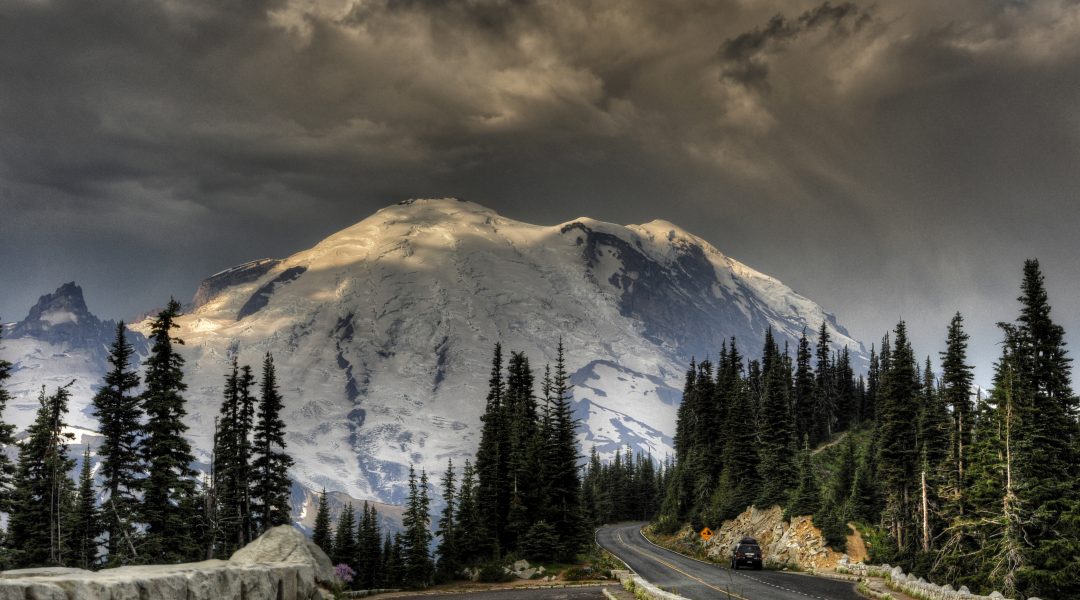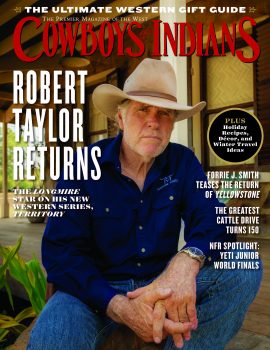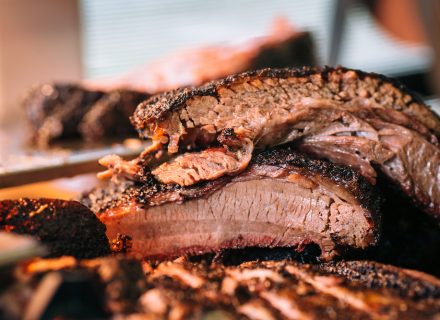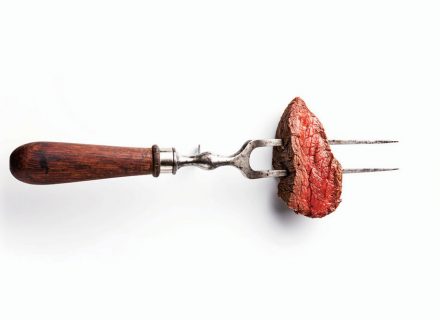Lhakpa Gelu Sherpa traded Mount Everest in his native Nepal for Mount Rainier in Washington state. Now he and his wife, Fulamu, offer climbers a taste of the Himalayas at their Wildberry Restaurant at the base of their adopted mountain.
Last year, Lhakpa Gelu Sherpa received the document he’d waited 13 years to get: the certificate stating that he owned the world record for the fastest climb of Mount Everest. He didn’t get it triumphantly on his return to base camp or celebrate it in the shadow of Nepal’s famed peak. Instead, when he received the scanned document from the supreme court of Nepal certifying his record, he was at the base of a different mountain, Washington state’s Mount Rainier.
Lhakpa made it up Everest in 10 hours and 56 minutes in 2003. But until last year, that record had gone unrecognized for more than a decade. Another climber had made the climb in 12 hours and 45 minutes two days before, a record that Lhakpa had beaten almost before it could be tallied. The following year, that same climber — Pemba Dorje Sherpa — claimed to have climbed it in eight hours and 10 minutes, but there was no proof and nobody saw him. Thirteen years later, his record was deemed unsubstantiated, and the title reverted to Lhakpa.
But Lhakpa has long since traded in his Everest credentials. He spent nine years guiding trips up Mount Rainier and, for the last four, has owned with his wife a restaurant called Wildberry in Ashford, Washington, about a mile from the entrance to Mount Rainier National Park.
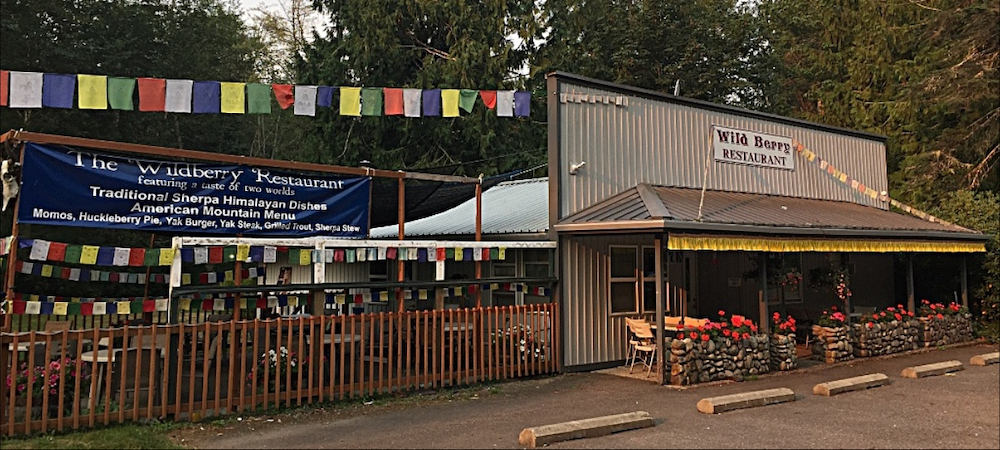
When the weather in Seattle is clear, locals say “the mountain is out” to describe the scene. Rainier is so dominant in the skyline that even before you begin the two-hour drive from the city, it looms on the horizon. From far away, the snowy, spiked peak takes up so much space, is so big, that it’s a bit like a Monet painting: At a distance, it seems crystal clear and all cohesive, but when you get closer, Mount Rainier ceases to be a single thing and instead becomes a mosaic of small towns, hiking trails, ski runs, trekking routes, and ranger stations. The peak overshadows the tiny actions — people making jam from huckleberries growing on the late-summer slopes and plucking mushrooms from the forested floors in the fall. It’s in those shadows that Lhakpa sells Sherpa stew and pork dumplings called momos — as well as fresh huckleberry pies.
“Ashford has three other restaurants,” Lhakpa says of the sparse town outside the park. “Only American food.” His family’s Himalayan cuisine draws throngs of visitors looking for something more than a hamburger. Almost 900,000 people visit Mount Rainier each year, about 10,000 of them aiming to climb the mountain. The rest come to hike the 93-mile appropriately named Wonderland Trail, walk a half-mile wildflower path, or simply admire the lakes, peaks, and panoramas from their cars as they make their way up, down, and around the 369-square-mile park. They come to play in the snow that sticks around all year, challenge their bodies, and generally bask in the glory of a 14,400-foot volcano. Many leave famished and looking for a good meal.
Wildberry offers them something memorably good and different. The restaurant feeds day hikers and trekkers alike the kinds of food that Sherpa housewives send their husbands out the door with in Nepal. Lhakpa’s wife, Fulamu, does the cooking, preparing hearty Sherpa stew with beef, vegetables, potatoes, and flour dumplings along with chicken curries and vegetarian chickpea dishes presented as part of platters called thalis that include curry, lentil soup, rice, Nepali flatbread, cucumber and onion salad, coleslaw, and mango and green pepper pickles.
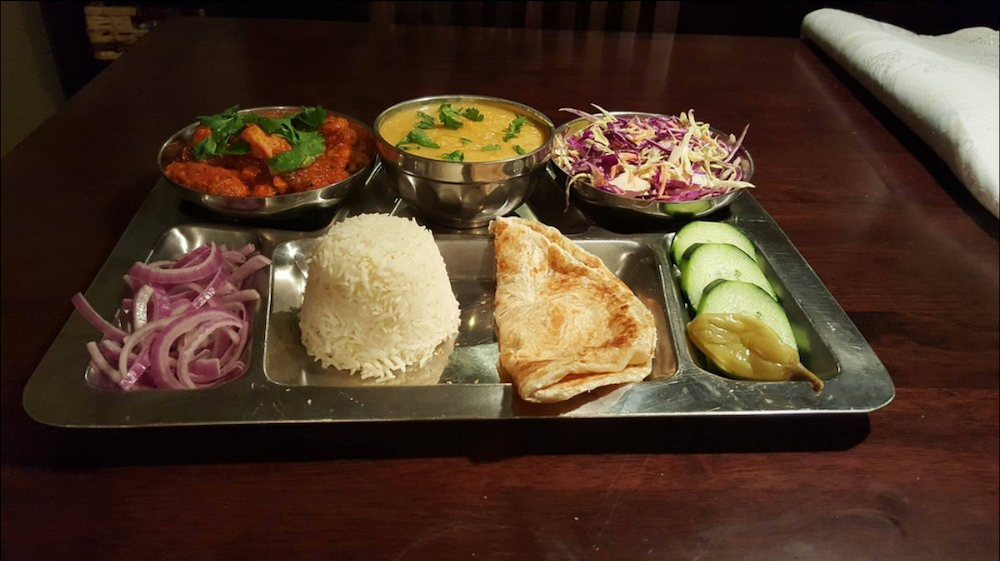
For eight years, Fulamu worked at a Whole Foods Market in Seattle, but when the opportunity came up to buy the restaurant from the previous owners, Fulamu and her husband jumped on it. Lhakpa knew that he couldn’t guide forever, and the restaurant seemed like a better business as they got older. The space had previously been another Himalayan restaurant, one that Lhakpa had stopped at after every one of his trips up the mountain. When they took over the space, Fulamu changed the recipes to her own and Lhakpa changed the décor, hanging prayer flags and Dalai Lama quotations and also information about treks Lhakpa has led and photos of Mount Rainier and Mount Everest.
Lhakpa admits that besides Nepali fare, they’ll also sell you a sandwich or a burger, too — mostly because in larger groups, one or two people are often hesitant to try the Himalayan food. But for those willing to give a new cuisine a try — or already familiar with it, like the rest of Seattle’s 200-person Sherpa community — Nepali food shares the same thick-sauced curries as Indian food, but with somewhat milder spices, making up for the flavor with the sharp, bright pickles. The rice, lentils, and flatbread are filling. It’s easy to believe that they’d power you up Mount Everest — or Mount Rainier. Lhakpa says he gets a lot of customers who are unsure how to eat the many dishes on the thali. Just dive in, he says. “Eat a little of this, mix it with a little of that.” A little confusion is understandable. The plate is as impressive as Lhakpa’s own journey to the tiny mountain town — a journey that started in another tiny mountain town halfway around the world.
Kharikhola, Nepal, sits at 9,000 feet above sea level. It’s not connected to surrounding towns by roads, only by trails. Every day, to get anywhere, Lhakpa would hike — including two-and-a-half hours to go to elementary school. The town had school only up to the fifth grade, so for higher grades, the children would walk for three days to another town — but staying there for schooling was too expensive for Lhakpa’s family. Because of those early struggles, Lhakpa used his earnings from guiding to start the Lhakpa Gelu Sherpa Foundation in 2010 to raise money for education in Nepal. In his hometown, some kids still can’t go to school because their parents can’t afford the required uniforms. He supports the foundation with an annual fundraising trek, the only guiding he still does. The money also supported rebuilding after the 2015 earthquake, and helps fund schooling to combat the country’s shortage of nurses and doctors.
At age 17, Lhakpa began climbing, moving on to bigger and bigger mountains and eventually beginning to guide at age 26 in 1993 — the same year he did his first of 15 Everest summits. “All mountains are the same,” he says. “The difference is the altitude.” They all have glaciers and crevasses. But Mount Rainier, which he estimates he’s climbed about 100 times, is 14,400 feet tall — and there’s nothing at the top. Looking up from Paradise, the lodge where many visitors start their hikes, there’s little vegetation after the scraggly evergreens peter out at the treeline around 7,000 feet above sea level. At that altitude in Nepal, he says, the land would be cultivated; farmers would be growing barley and vegetables. Everest’s base camp is at 17,200 feet and gets blanketed in green come summer, sprinkled with stunning flowers.
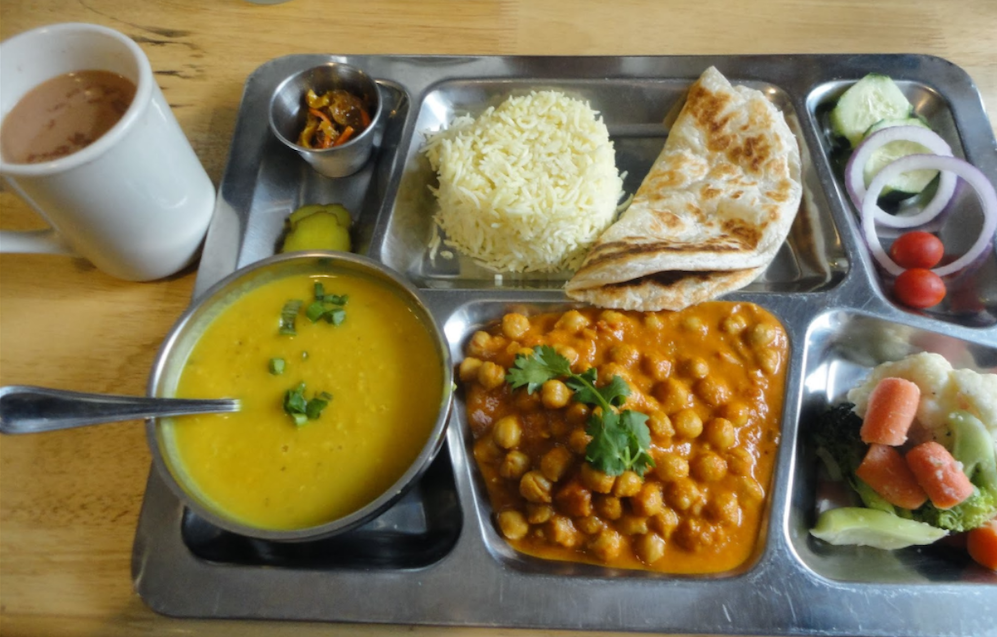
But Mount Rainier is enough like his homeland to satisfy his nostalgia for the Himalayas. “I love the mountainside,” he says. “The trees, the weather, the environment doesn’t feel that different.” But there is a big difference in the opportunities here. “In Nepal, there’s no opportunity to do anything,” Lhakpa says. So in 2007, he brought his family to the United States. Now, he has his own foundation, a guiding company called Adventure Ascents, and the restaurant. His three children, preteens and teenagers when they moved to the States, finished their educations here; now grown, they work alongside their parents at Wildberry.
The family lives in Seattle in the winter while the restaurant is closed for the season and in Ashford when it’s open. Lhakpa and Fulamu also own a restaurant and inn in their hometown back in Nepal (mostly run by his sister-in-law). “The food is the same,” he says, except for how they get the food: There, there is no distribution system or delivery, no fridge, no electricity. They have a farm behind the restaurant. “When a customer comes, we go to the garden and pick the vegetables,” he says. Anything else needs to be carried up. “It’s the same food, it’s just easier here,” he says.
“I came for the mountain,” Lhakpa says of how he ended up on Mount Rainier, just like most people do. But now, he stays for the restaurant, which he and his wife hope to expand. They recently bought the property, and his goal is to build a second floor and have a lodge, similar to his restaurant and inn back in Nepal. And he hopes to support his community in both places.
Contemplating what’s next, he sweeps his hands around him and smiles. “This,” he says. Looking up at the mountains — the one looming above the porch where a group of hikers clink their beers and the one in the picture next to the story of his world record — he seems to need nothing else. Wildberry Restaurant, 37718 State Route 706 E, Ashford, Washington, 360.569.2277
Photography: (featured and middle photo) Deby Dixon/Courtesy Visit Rainier, Courtesy Wildberry Restaurant
From the July 2019 issue.






